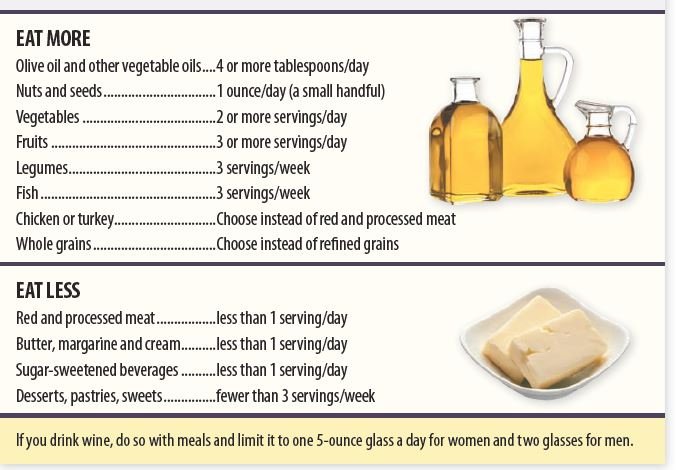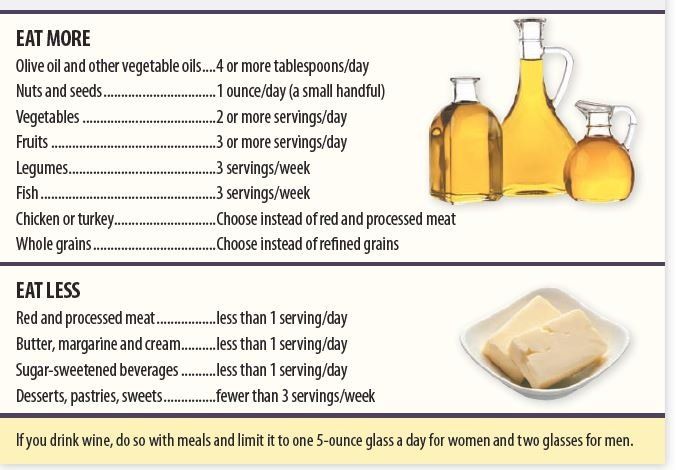The Mediterranean-type diet is just one dietary pattern among several mentioned in the 2015-2020 Dietary Guidelines for Americans that can help prevent disease and promote health. To be precise, there is not just one Mediterranean diet—not in the sense that there’s only one South Beach or Zone diet. Because the Mediterranean region covers multiple unique food cultures, the diet can be thought of as an overall pattern of eating with certain consistent features.
“The Mediterranean-type diet emphasizes whole fruits and vegetables, olive oil and other plant oils rich in unsaturated fat, alongside fish, poultry and dairy products consumed in low to moderate amounts, and relatively small amounts of red meat and added sugar,” explains Alice H. Lichtenstein, DSc, director of Tufts’ HNRCA Cardiovascular Nutrition Laboratory and executive editor of Tufts Health & Nutrition Letter.
One specific approach to the Mediterranean-type diet that has been tested in a large randomized clinical trial of heart disease prevention is the Spanish approach. Participants in the PREDIMED study who ate the Mediterranean pattern characteristic of Spain, supplemented with either nuts or olive oil, had fewer cardiovascular problems, particularly strokes, than participants in the control group, who were not told to follow the Mediterranean diet or provided with extra nuts or olive oil.
Below are some general guidelines for how to adopt a Mediterranean-type dietary pattern. Keep in mind that a healthy eating pattern is as much about the foods you replace as the foods you add. Just adding olive oil and nuts to an otherwise unhealthy diet is not the answer. The Mediterranean-type diet provides the most health benefits if you replace less healthy foods such as refined carbohydrates, high-sugar foods and beverages, and processed meats with healthier options.






















